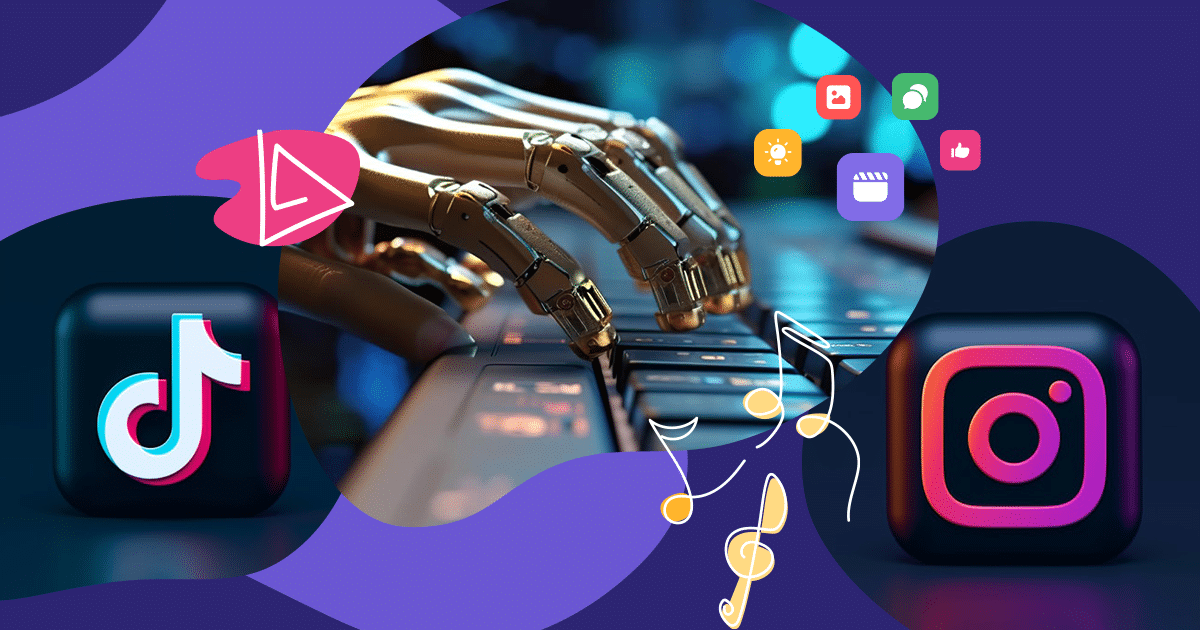Hashtags make the marketing world go around.
In 2019, marketing specialists SEMrush surveyed more than 1200 marketers around the world and reviewed more than 450,000 tweets, 700,000 blog posts, and hundreds of thousands of search queries to gain a better understanding of content marketers and producers.
They sorted the information, and among other findings, determined the top content marketing hashtags.
But what exactly are hashtags and what do they mean to the marketing industry?
The fact is:
- Back in the 1980s, people on Internet Relay Chat (IRC) used the hashtag to label groups and topics to make communication easier.
- Use of the # symbol faded with IRC but made a comeback on August 23, 2007, after Chris Messina suggested using the hashtag to organize Twitter groups.
- Today, hashtags are powerful content marketing tools.
The Meaning of the Top 10 Content Marketing Hashtags
10. #digitalmarketing
Digital marketing is advertising that uses electronic devices, and often the internet, to reach potential customers.
Marketing on the internet is different from advertising on other mediums, such as:
- radio
- television
- direct mail
- telephone
Internet marketing allows marketers to target and interact with interested customers, rather than simply broadcasting a message to a large – and often largely uninterested – group of people.
Digital marketing is relatively new.
The term “digital marketing” first appeared in the 1990s, during the first stage of the World Wide Web, now known as the Web 1.0 platform.
Websites were static back then, which means they did not offer interactive features based on visitor behaviors. More importantly, visitors could find the information they needed, but they could not share it with others.
In the early days of digital marketing, marketers were already having great success reaching consumers through television, radio, and print ads, so they weren’t terribly interested in trying new tactics.
Only few marketers dipped their toes into the new, untested waters of the internet.
Rapid changes in technology over the next three decades changed all that. Search engines, such as:
- Yahoo! (1994) and Google (1997), fundamentally changed how people learned about products.
- E-commerce sites like Amazon (1994) and eBay (1995) revolutionized how consumers purchased products.
- The introduction of social media platforms, such as LinkedIn (2002), Myspace (2003), Facebook (2004) and Twitter (2007), allowed users to share personal information.
How big data changed things
Big data made it possible to track this information, and use it to detect consumer interests and purchasing patterns.
Today’s digital marketing uses the internet, mobile phone apps, display advertising and other digital mediums.
Digital marketing campaigns now employ a combination of tactics and practices, such as:
- content marketing
- e-commerce marketing
- search engine optimization (SEO)
- search engine marketing (SEM)
- e-mail direct marketing
- social media marketing
- social media optimization
- display advertising and campaign marketing
Campaigns may use:
- influencer marketing
- content automation
- data-driven marketing
- e-books
- optical disks and games.
Industry professionals use the hashtag #digitalmarketing to advertise their digital marketing services.
Using the hashtag on social media, such as Facebook, Twitter and LinkedIn, brings up digital marketing companies, courses, information, news, and resources.
9. #marketing
Dictionary.com defines marketing as, “the total of activities involved in the transfer of goods from the producer or seller to the consumer or buyer, including advertising, shipping, storing, and selling.”
At its surface, marketing is merely the promotion and selling of products or services. At deeper levels, though, marketing is the development of relationships between a brand and its consumers.
Through marketing, companies and organizations teach potential customers about a product or service, and provide information that encourages clients to choose them over their competitors. I
n many cases, marketing is the key to any organization’s success, regardless of its size.
When did marketing first begin?
The concept of marketing has been around since humans began trading. The word “marketing” first described the act of selling products at a market around 1560.
It gained acceptance as the business term describing the process of moving goods from producer to consumer with emphasis on advertising and sales by 1897.
Marketing as a form of advertising gained traction during the industrial revolution, when marketers had to convince consumers that it was better to buy a product off an assembly line than to make it themselves.
Marketing really took off in the decades to follow, with print marketing appearing on billboards, in newspapers and in magazines. Sponsors paid for radio spots and television commercials.
While much of marketing is still done through traditional mediums, such as television and in print, a growing share of marketing is online.
In fact, eMarketer predicts digital advertising to surpass traditional marketing soon, and account for about two-thirds of total media spending by 2023.
There’s more to modern marketing than just spending money for ads, of course. Today’s marketer has to create written content, develop visual content, interact on social media, engage in email campaigns, track performance, use analytics, and evaluate campaign performance.
Using the hashtag #marketing on Facebook, Twitter, and LinkedIn brings up information on improving marketing, and links to marketing blogs, marketing services, and professionals.
8. #seo
SEO is the acronym for search engine optimization, which helps websites perform better on search engines, such as Google, Yahoo! and Bing. Search engines find the best match to what a user might type into its search bar.
Search engines use web crawlers, also known as search engine spiders or bots, which crawl through hundreds of billions of web pages.
The search engines download and categorize the pages they encounter, and follow the links on those pages to find other pages.
The SEO process involves making a website that is easy for search engines to find, crawl, and categorize.
Doing well on search engine results can make the difference between success and failure. There’s an old joke among marketers that goes, “The best place to hide a dead body is on the second page of Google.”
It is particularly important for a brand’s webpage to appear on the first page of Google or other search engines.
Research shows that being on the first page improves “click through rate,” which is the percentage of people that get to a webpage by clicking on a link.
An August 2019 analysis by Backlinko revealed that the number one result in Google’s organic search results sports an average click through rate (CTR) of 31.7 percent, and that the page appearing in the top spot is ten times more likely to get a click than is the page in the number 10 spot.
SEO helps brands secure that lucrative #1 spot on search engine results.
While the goal of SEO is simple – to get as close to the #1 spot as possible – the process is considerably more complicated.
It involves making a website more accessible to web crawlers, creating compelling content that answers the searcher’s query and that users love to share, incorporating keywords to attract searchers and search engines, and using a title, URL, and description to draw in high click through rates.
The SEO hashtag helps marketers reach brands that need help to improve their ranking on search engines and their click through rates. Users can enter #seo into search engines or social media to find search engine optimization tips, news, and best practices.
7. #socialmedia
Social media is an umbrella term that describes websites and applications that lets users create and share content, and to participate in social networking.
Marketing professionals will use the hashtag #socialmedia to advertise their services. Users who type #socialmedia into a search engine or social media search can find marketing companies, tips, and trends.
6. #smm
#smm is an acronym for social media marketing. Using acronyms is increasingly commonplace on the internet, and particularly among those who use Twitter or other social media that restricts the number of characters used in a post.
Interestingly, the acronym #smm placed higher on the SEMrush report than did #socialmediamarketing, which means the shorter version was much more popular.
Social media marketing experts use #smm to attract brands that would like to market on social media, but who do not have the time, interest, or expertise in doing so.
5. #socialmediamarketing
Social media, such as Facebook, Twitter, YouTube, Snapchat and Instagram, is a great way to connect with a target audience. These platforms make it easy for consumers to learn more about products and services.
Social media also helps brands learn what their customers want, and to distribute information about new products and services.
About 70 percent of people in the United States use social media, according to Pew Research Center; Statistica says that about 45 percent of the world’s population uses social media.
Facebook and YouTube are the most widely used among internet users. Approximately 54 percent of social media users utilize social media to research products by:
- visiting a brand’s social media page
- “liking” or following a brand on social media
- using the “share” button on a brand’s website
- clicking on a brand’s promoted or sponsored post on social media.
Global users spend an average of 2 hours and 22 minutes on social networks and messaging. Social media marketing taps into this widespread use.
Nearly 90 percent of marketers use Facebook in their marketing campaigns, according to Sprout Social, and about 75 percent of marketers will use Instagram in 2020.
Ninety-five percent of business-to-business (B2B) marketers use LinkedIn for organic content marketing and for good reason – the platform is 277 percent more effective than Facebook for generating leads.
Social media marketing involves the use of social media to attract and engage potential and existing customers, bloggers, employees, journalists and anyone else who uses social media.
Specifically, social media marketing activities include posting texts, images, videos, and other types of content, as well as utilizing paid social media advertising.
The approach seems to be working – about 73 percent of marketers think their social media marketing efforts have been “somewhat effective” or “very effective” for their business.
Positive customer experience on social media is essential. A whopping 71 percent of customers who have a positive social media experience recommend the brand to their friends and family.
Social media marketing is one of the best ways to promote positive customer experiences.
Using the hashtag #socialmediamarketing helps marketers find information on using keywords on social media channels, tips on using social media to market products and services, new social media platforms.
4. #content
“Content is where I expect much of the real money will be made on the Internet,” wrote Bill Gates in his 1996 essay entitled “Content is King.”
Content still reigns today because it educates the audience about a product or service, improves rankings on search engine results, and drives social media strategies.
Content also brings traffic to a brand’s website from different website through external backlinks.
Content often means different things to different people, but at its core, web content is the textual, visual, or aural “stuff” that occupies a web page.
Textual content includes written information on websites
- blogs
- long-form content
- case studies
- white papers
- ebooks
Visual content includes:
- graphics
- infographics
- videos.
Content can be informational or experiential
Informational content is practical and functional.
Experiential content is anything that adds value to the visitor’s life by making them feel emotional or inspired to take action.
In other words, the content makes a memorable impact on the consumer.
While it is important to populate a website with content, slopping up crummy content can create a terrible experience for the customer.
Bad content is boring, stuffed with nonsensical keywords and obsolete or incorrect information, peppered with product names, and contains spelling and grammar errors.
To avoid creating bad memories with consumers, many companies and organizations are outsourcing at least one content marketing strategy.
For example WriterAccess pairs business and agency owners with expert writers to write their blog, website copy, or even their emails.
Of those outsourcing content marketing activities, about 84 percent of B2Bs and 87 percent of B2Bs say they will outsource content creation in the upcoming year.
Content creation and content marketing professionals often use the hashtag #content to advertise their outsourcing services.
3. #onlinemarketing
While they may seem the same at first glance, there are subtle differences between digital marketing and online marketing.
Digital marketing is an umbrella term that covers any type of marketing done with an electronic device, such as broadcasting, podcasts and e-books.
Digital marketing even covers out-of-home (OOH) advertising, such as modern digital billboards and kiosks.
Online marketing is a subset of digital marketing. Online marketing relies on the internet to perform. This niche includes:
- websites
- blogs
- social media
Many companies find great success in online marketing. Airbnb changed the way people travel by featuring user-generated images and videos uploaded to Facebook, Instagram, and Twitter.
Dollar Shave Club came out of nowhere in 2012 with a silly YouTube video; in 2015, the online shaving product retailer scraped in a clean $153.5 million.
MoonPie began showing off their delicious sense of humor and tasty treats on Twitter in 2016, and sales shot up 17 percent overnight.
Some online marketing strategies are better than are others. Using hashtags is one way to use online marketing to attract and retain customers.
Lush Cosmetics encourages users to submit their own content directly to the company by using the #LushLife Instagram hashtag, for example.
Online marketing professionals might use the hashtag #onlinemarketing to advertise their services; brands may use the hashtag to find companies and individuals who provide online marketing services.
2. #business
People have been conducting business since the dawn of time. The earliest businesses involved mercantile operations, trade guilds and shared agricultural productions.
Loosely defined, businesses today can be for-profit or non-profit commercial, industrial, professional, or charitable organizations. They can range from sole-proprietorships to international corporations.
All businesses have one thing in common – the need to establish and maintain a relationship with their consumers.
Content marketing and content marketing hashtags can help businesses reach their target audience. Using the hashtag #business can help business and marketing professionals connect with organizations in need of information about businesses and marketing.
1.#growthhacking
Growth hacking is a marketing approach that, as its name suggests, focuses on finding shortcuts to acquiring as many customers as possible, as quickly as possible.
This relatively new field is popular among early-stage startups that need tremendous growth in short time and on small budgets, but it is also gaining in popularity among larger corporations.
Growth hacking is particularly attractive to companies in the early stages of launching a new product or service to the market.
A growth hacking team consists of highly skilled engineers, developers, product managers, and marketers dedicated to building a brand’s user base.
They work to find smarter, lower-cost alternatives, such as social media and online marketing, to traditional marketing.
Growth hacking techniques include advanced search engine optimization, website analytics, content marketing and A/B testing that compares two versions of a product.
Growth hacking professionals use these techniques to rapidly test persuasive copy and email marketing approaches, test SEO results and explore strategies to make content go “viral.”
The end goals of growth hacking are to stimulate rapid growth of the user base and increase conversion rates.
Because growth hacking requires advanced tools and skills, everyday marketers who want to experience explosive growth may need to consult with professional growth hackers.
Using the hashtag #growthhacking can help businesses connect with growth hackers.
Incorporating these ten hashtags into a marketing campaign can help nearly any industry reach more prospects, convert more customers, and increase profitability. For more information on what the top ten content marketing hashtags mean in the industry sign up for the all free WriterAccess Academy.
2024 State of Marketing Report
Your golden ticket to crush your goals with data-driven insights!
2024 State of Marketing Report
Your golden ticket to crush your goals with data-driven insights!

![[Rock NA] State of Marketing Reports 2024 – Comkt Hubspot State of Marketing Report 2024](https://rockcontent.com/wp-content/uploads/2022/07/Banner-Fino-Rock-Convert-2500-%C3%97-500-px-19.png)






